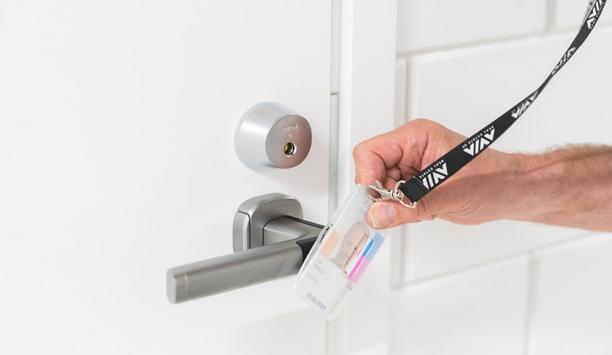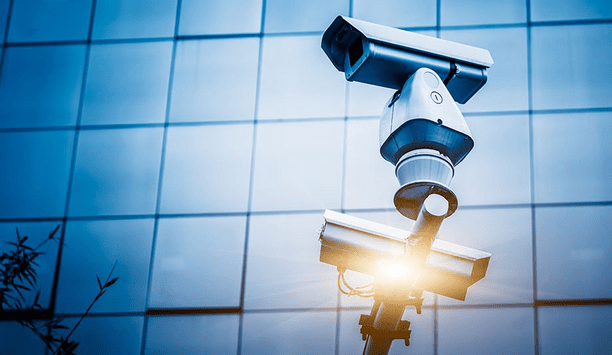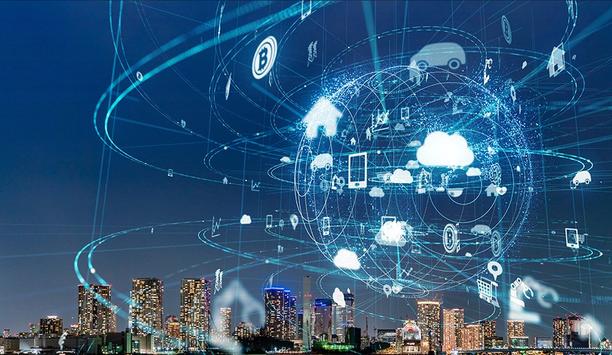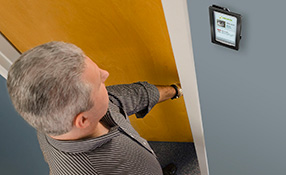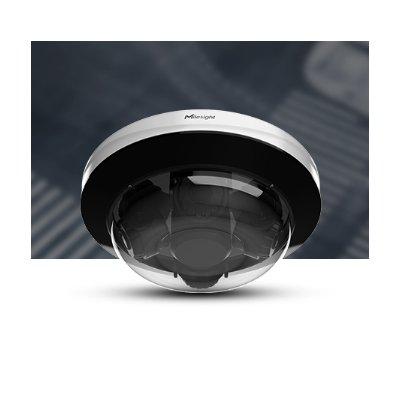 |
| The development of PSIM security systems and the move towards smart buildings and cities holds huge potential for environmental performance in the security industry |
Is the drive to give clients improved CCTV, perimeter protection, intruder alarms and access control making our industry any greener? Is technological innovation consistent with reducing security industry’s carbon footprint? In any case, green operating practices are more a side effect of current developments than a planned objective.
Energy efficient CCTV lighting
Camera lighting (both IR and white) is a convenient starting point, and the ability to focus illumination on areas of potential interest rather than flood a large expanse indiscriminately is producing significant energy savings. There’s little debate that present-day LED illuminators out-perform sodium and halogen equipment in terms of area of coverage and power consumption. Industry observers estimate that LED lamps often use as little as 10 percent of the power consumed by conventional incandescence. Similarly, motion-based PIRs (now a venerable technology dating from the ‘70s) are extremely energy-efficient save for their occasional nuisance activations.
So what could be better for the planet than the new breed of energy-efficient CCTV lighting products? The obvious answer is cameras that require no lighting at all and will work by ambient moon and starlight. Quoting comparative lux levels for ultra-low-light camera performance is problematic as there is no consensus as to use of auto gain control (AGC) and slow-shutter mode. But CMOS sensor design is improving, a fact that means IP cameras are catching up after initial poor performance in low light compared with analogue. Recent camera “shoot outs” have produced serviceable image quality at low lux levels that are nearly off the scale. Again, insofar as this means there is often no need for additional lighting, it’s a green development.
Exploring solar panels as power supply
Many improvements in our industry can be traced to advances in telephony, a sector that has given us the managed hub by which a device receives power appropriate to its exact needs (often down to a few milliamps) rather than an arbitrary amount dictated by classifying every channel in the same broad terms.
A common rallying cry, to which I don’t subscribe in security or any other sector, is that solar power will be the environment-friendly saviour of us all. Ask your friendly local installer to show you a camera project that is solar-powered. I’m willing to make a wager as to what kind of project it’s likely to be. Of course I’m happy to be proven wrong, but I’d maintain that the majority of solar-powered CCTV is at locations that are remote or “off-grid” such as pipelines, border control, water supply hubs and early-phase construction sites. The driving force is the logistics of power distribution rather than concern with carbon footprint. Saying this, I’m aware that companies such as MicroPower are successfully exploiting solar panels to operate low-current-draw cameras and the practice may become mainstream.
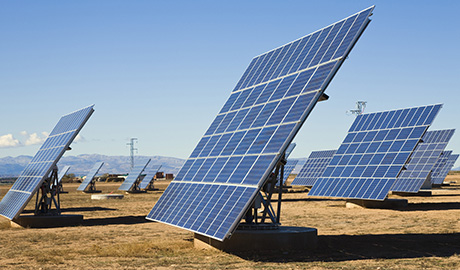 |
| Solar energy is being used as a power supply by companies such as MicroPower to operate low-current-draw security cameras |
Miniaturisation (with the driving force being spin-off from consumer video) can hardly fail to make the security industry greener. An original motivator for changing from CRT monitors to flat-panel screens both in offices and security control rooms must have been desk space, but it need hardly be added that they are not only more efficient in terms of consumption of non-renewable resources in manufacture but draw less current and emit less heat.
On the subject of heat, as I was being ushered into a server room recently, I found that my remaining hair was standing on end such was the gale coming from the rack cooling fans and air-conditioning. This set me to thinking that the relationship between unwanted heat generation and the requirements for heat dissipation is exponential. Thus, an inefficient DVR generating a heat throw of 40 watts may require use of a fan-cooler that consumes 80 watts. That’s a particularly vicious sequence.
Eco-friendly technological innovations
Numerous innovations are making us greener through small improvements in fossil fuel usage. The modern security installer’s habit of “piggy-backing” on existing structured cabling wherever possible must have saved thousands of miles of Cat5 worldwide. Power over Ethernet (PoE) was designed with time and cost savings in mind; carbon footprint would hardly have been a consideration but the fact is that the technique makes economical use of raw materials. Small improvements in our environmental performance range from modern video compression codecs reducing storage demands to on-board camera analytics eliminating the need for hardware to conduct video processing at the core. And green attracts green as eco-friendly technological innovation often reaps immediate rewards: installers with ISO 14001 are likely to consolidate their qualification by specifying products from manufacturers associated with sound ecology so creating a cycle of sustainable operating procedures.
The innovations listed above are certainly reducing use of fossil fuels but will never be more than micro trends. The potential game-changer for how innovation within our industry might have major environmental impact lies with PSIM (physical security information management). It’s a significant development in that PSIM security systems within truly “intelligent” and sustainable buildings are evolving beyond mere aggregation of data. Managers are beginning to inhabit a connected multi-disciplinary zone of components and sensors. This is an environment that gives them a platform to filter and share security information on such a scale that they are finding structure and patterns in data that should soon move us from the “smart building” to the “smart city.” Make that leap, with the security sector claiming some of the credit, and our green practice will truly have come of age.



























